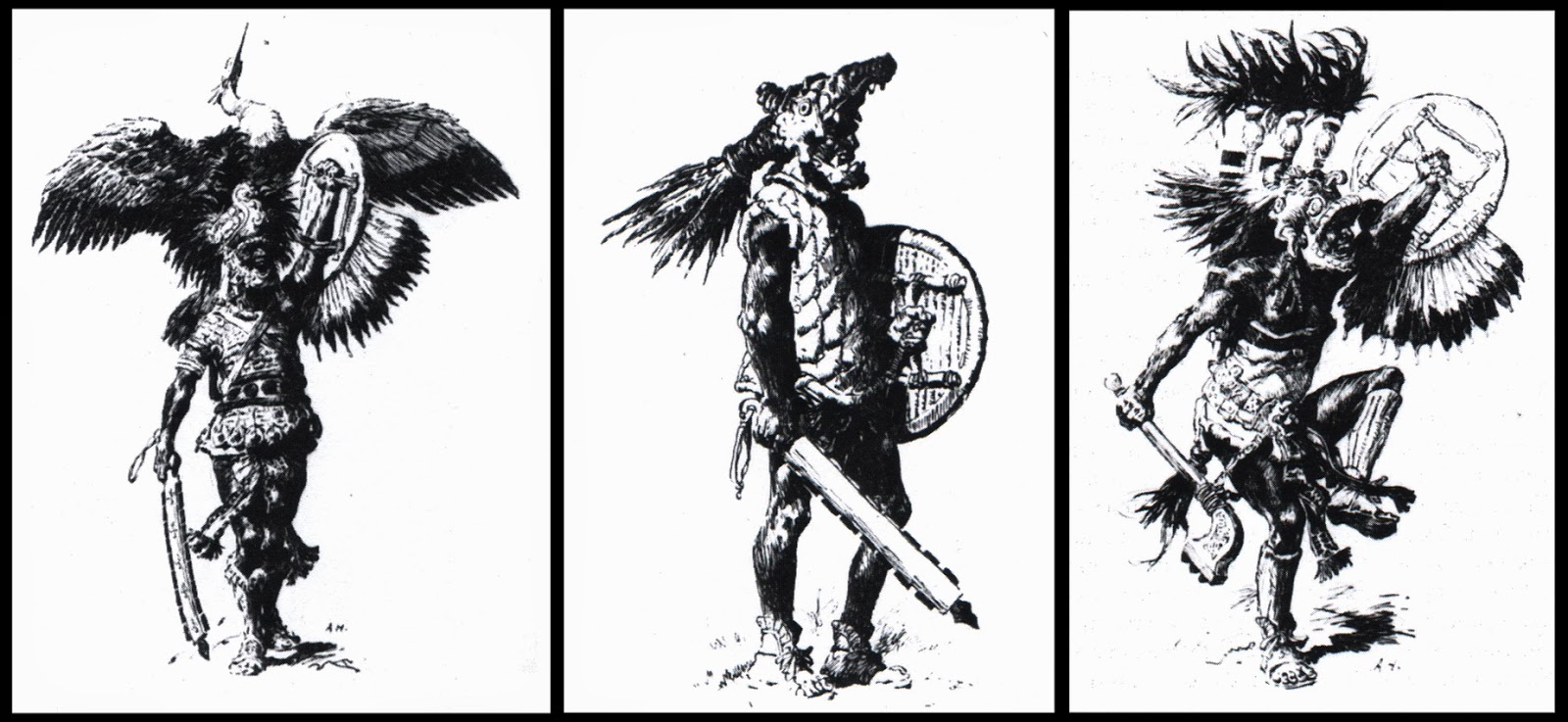 |
| The Castilians: concept character banner sketches for ©TENOCHTITLAN-2012 |
Nevertheless this title is so well-known, so usual and logic that seem like a assertion of the conquest as a war fact in favor of the winners. I don't want that. As I say my intention is to be the most impartial as possible and present the two factions as they was in the moment to bring face to face. So I keep searching and waiting for a good title.
"Hernán Cortés" was another title prospect but, like the previous one, it was partial and trite. It is no a bio about the conquistador although he is a kind of conductor thread of the graphic novel. This is owing to my intention to throw light to this character in the way we go back to the Cortés youth to known from where he were and how he was before he appear on the Mexico Gulf and become the Conqueror of Tenochtitlan.
"Conquistadores" maybe work but it is partial too so it was reject. As well this title was used for a movie project and for a recent graphic novel.
Maybe I find some suggestion on nahualt language, somethingh the name of a god or a ritual as Mitton's "Quetzalcoatl" or "The God of Rain....", "Aztecs" but if I do that I'll become partial as with the early examples. I must to find something that have in common both side if the factions, but, what?
Suddenly here the solution; what conquest Hernán Cortés? What defend the mexica? Where developed the most part of the plot? The answer is clear: the great city of Tenochtitlan! As well the castilians as the aztecs fight for the city of thousand bridges. Was the dream of some, the first and authentic El Dorado. Was the sacred city of the powerful and frighteners mexica, the center of their universe, the door of the aztecs three worlds, their proud and their symbol. And to me a great challenge; to recreate that mithical lake city in all its splendor and magnificence, their perfect grid street system, their canal, their bridges, their temples and palaces, their imponent Sacred Precinct...
 |
| The Aztecs: concept character banner sketches for ©TENOCHTITLAN-2012 |
***
 |
| Los Castellanos: bocetos para banners con personajes de ©TENOCHTITLAN-2012 |
Sin embargo esto quedaba tan trillado, tan usual y lógico e incluso parecía una afirmación de la acción bélica de conquista a favor de los vencedores. Y yo no quería eso. Como expliqué arriba mi propósito era ser lo más imparcial posible y presentar a los dos bandos tal cual estaban en el momento del encuentro. Así que decidí seguir buscando y esperar a que surgiera un buen título.
"Hernán Cortés" fue otro título que barajé pero, al igual que con el anterior, resultaba parcial y manido. No se trata de una biografía de Hernán Cortés aunque es cierto que este personaje es el hilo conductor de la novela. Pero esto se debe a que quería lanzar más luz sobre este extremeño por lo que nos trasladamos a años antes de la Conquista de Tenochtitlan, en su juventud, y conocer de dónde provenía y cómo era antes de aparecer por las costas del Golfo de Mexico.
Busqué por la web alguna sugerencia y me llamó la atención un proyecto de película del mismo tema que se iba a llamar "Conquistadores". Este proyecto al parecer no cuajó. Y ese título para mi comic book tampoco.
Miré también algún nombre en nahualt, como el de algún dios o algo parecido pero no lo veía fiable ya que tambien pecaría de ser parcial. Tenía que conseguir algo imparcial algo que compartieran en común ambos bandos. Que significara para ambos lo mismo y que por igual los involucrara, amén que resultase novedoso, fuerte, impactante y de una sola palabra, como el "Quetzalcoatl" del frances Mitton.
Y claro, eh aquí la solución; ¿qué conquistó Hernán Cortés? ¿Qué defendieron los mexica? ¿Dónde se desarrolla la mayor parte de la historia? Pues en estas preguntas está la respuesta: ¡la gran ciudad de Tenochtitlán! Tanto los castellanos como los mexica pelearon por la ciudad de los mil puentes. Fue el sueño de unos, el primer y verdadero El Dorado que tanto se afanaron los conquistadores que vinieron después. Fue la sagrada ciudad de los poderosos y temidos mexica, el centro del universo azteca, la puerta entre los tres mundos, su orgullo y su símbolo. Y para mi un gran reto; recrear la mítica ciudad lacustre con su cuadrículadas calles, sus canales, sus puentes, sus templos y sus palacios, su gran Teocalli...
 |
| Los Aztecas: bocetos para banners con personajes de ©TENOCHTITLAN-2012 |





































